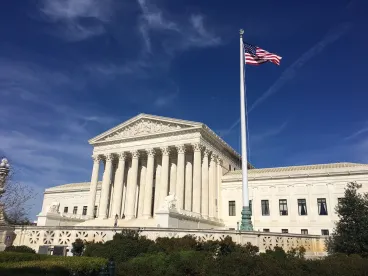The United States Supreme Court has picked up the pace this week, already issuing eight regular opinions and four opinions relating to orders as of today. We discuss the tax-related items here.
In Rodriguez v. FDIC, the question was how to decide which member of a consolidated group of corporations is entitled to a tax refund. The Internal Revenue Service (IRS) issued a refund to the designated agent of an affiliated group, but the dispute centered on how that refund should be distributed among the group’s members. Some courts have looked at state law to resolve the distribution issue while others crafted a federal common law rule providing that, in the absence of an unambiguous tax allocation agreement, the refund belongs to the group member responsible for the losses that led to the refund. The Supreme Court rejected the latter common law rule, finding that it was not a legitimate exercise of federal common lawmaking. In reaching its decision, the Court noted that federal judges may craft such types of rules only in limited areas and it must be “necessary to protect uniquely federal interest.” The Court, however, did not decide who, in the case before it, was entitled to the refund, but remanded the case for further proceedings.
In Baldwin v. United States, Justice Thomas dissented from the denial of certiorari in a case asking the Court to reconsider National Cable & Telecommunications Assn. v. Brand X Internet Services, 545 U.S. 967 (2005). We previously discussed Baldwin here, in which the US Court of Appeals for the Ninth Circuit held that, under Brand X, its prior construction of Internal Revenue Code section 7502 did not preclude a different interpretation by the IRS because the prior construction was based on filling a statutory gap in a reasonable manner. Because the IRS’s subsequent regulatory interpretation was reasonable (in light of ambiguous statutory language), the Ninth Circuit effectively overruled its prior precedent and accepted the IRS’s subsequent contrary interpretation.
Justice Thomas, the author of Brand X, had a change of heart and wrote that his dissent that the prior opinion appeared to be inconsistent with the Constitution, the Administrative Procedure Act (APA) and traditional tools of statutory construction. In his dissent, he called into question the continuing viability of Chevron U.S.A., Inc. v. Natural Resources Defense Council, Inc., 467 U.S. 837 (1984), expressing the view that Chevron “is in serious tension with the Constitution, the APA, and over 100 years of judicial decisions.”
Practice Point: These latest developments from the Supreme Court should be noted by taxpayers and practitioners. As with the highly contested opinion in Kisor v. Wilkie last term, it is clear that many Justices are uncomfortable with granting a high level of deference to government agencies. Deference issues continue to be in the forefront in several tax cases, and likely will continue to be highly relevant in forthcoming challenges to many regulations in the wake of tax reform in 2017.




 />i
/>i
